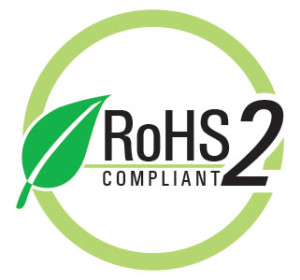Restrictions of Hazardous Substances (RoHS) is a European Union-based directive that requires certain substances of very high concern, such as cadmium, lead, and mercury, be limited in the manufacture of electronics and electronic devices. RoHS, which was fully implemented by the EU in 2006, is closely linked with the Waste Electrical and Electronic Equipment Directive (WEEE), a set of goals expressing collection, recycling, and recovery targets for electrical goods.

More specifically, RoHS bans the sale of electrical and electronic equipment containing more than agreed-upon levels of lead (Pb), cadmium (Cd), mercury (Hg), hexavalent chromium (Cr6+), polybrominated biphenyl (PBB), and polybrominated diphenyl ether (PBDE) flame retardants. For Cd and Cr6+, there must be less than 0.01% of the substance by weight at raw homogenous materials. For Pb, PBB, and PBDE, there may not be more than 0.1% of the material when calculated by weight at raw homogenous materials. All RoHS compliant components manufacturers must agree to limit the amount of Hg to 100 ppm or less, and cannot have deliberately added it.
As the list of chemical and product regulations affecting the electronics industry continues to grow, a renewal certification is required. It was not until the 2006 directive was “recast” in 2011 that it included equipment categories such as medical, in vitro diagnosis (IVD), and industrial monitoring and control.
Because several of the IVD products available were not designed to be RoHS compliant, compliance can be achieved with the new RoHS 2 directive by analyzing the bill of materials to fully understand what components are used. This process could take months to complete, depending on the size and complexity of the equipment. It may also help companies understand which components, through RoHS compliant, are not recommended for new designs or may already be obsolete.
Next, companies must develop a replacement plan for any non-compliant materials and establish a redesign. This could include anything from changing label materials to a complete circuit board redesign. Doing a last-time-buy is not recommended on non-compliant materials as they will not be usable after the deadline. However, incorporating the material into spare parts may help companies avoid being left with a large inventory no longer available for use.
Companies, ranging anywhere from established manufacturers of IVD equipment or start-ups, have until July 22, 2016 to comply with the new recast RoHS 2 directive. For those who fail to comply, it will be equivalent to a breach, resulting in anything from a warning or fine for individuals, to the removal of products from the EU market or even the recall products already sold.
The RoHS 2 update is a firm deadline, meaning that manufacturers will need to conduct a detailed analysis of steps well in advance to ensure the product is ready on time. Any modifications to an IVD instrument must be verified and validated, and follow regulatory submissions before being transferred to production. The duration of activities needed to be performed depends vastly on the complexity of the product.
For questions regarding RoHS 2 compliance, see the FAQ document. The application to renew the RoHS 2 directive can be found here.
Advertisement
Learn more about Electronic Products Magazine





